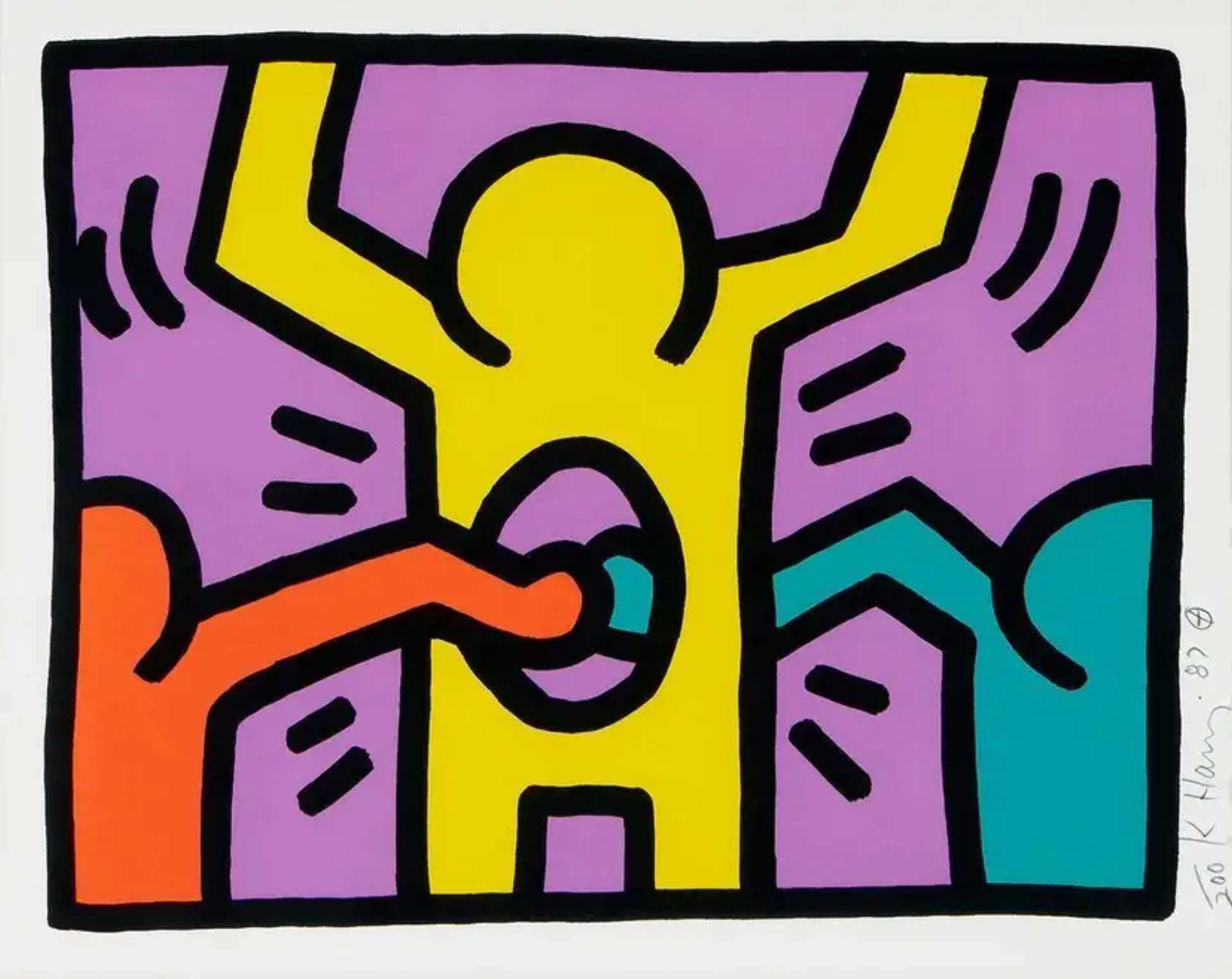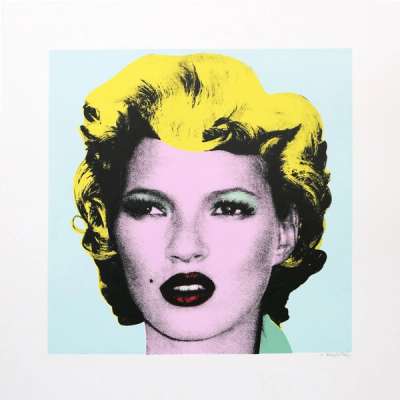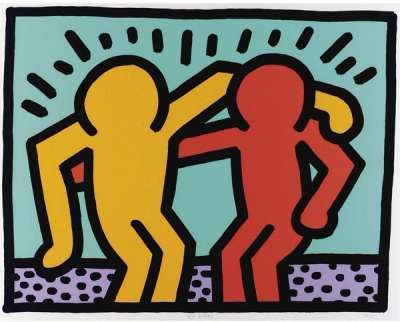What Makes an Image Iconic?

 © Robin Platzer / Iconic Images / Bianca Jagger, Halston, Liza Minnelli, Jack Haley Jr, and Andy Warhol at Studio 54 on New Year Eve’s, New York City, 1977
© Robin Platzer / Iconic Images / Bianca Jagger, Halston, Liza Minnelli, Jack Haley Jr, and Andy Warhol at Studio 54 on New Year Eve’s, New York City, 1977Live TradingFloor
What transforms an artwork into an icon, an image that transcends time and space to embed itself in our visual culture? The journey to uncover what makes an image iconic is not just about appreciating a single frame or a stroke of genius: it is about dissecting an intricate tapestry of stories, eras, and innovations that converge in that decisive moment of creation. Indeed, true ‘icon’ status is attributed only to the most unforgettable and ubiquitous images of our time.
In a world where every photograph, print, and painting vies for attention, the question of what elevates an image to icon status remains ever-pertinent. No better is this phenomenon understood than by Iconic Images, a gallery and photography archive built upon the ethos of iconicity. In this latest episode of MyArtBroker Talks, Erin-Atlanta Argun sits down with Carrie Kania - Creative Director at Iconic Images - to discuss what truly compensates an ‘iconic’ image.
You can listen to the complete podcast here.
 © Terry O’Neill / Iconic Images / David Bowie for the promotion of Diamond Dogs, 1974
© Terry O’Neill / Iconic Images / David Bowie for the promotion of Diamond Dogs, 1974The Essence of an Iconic Image
When it comes to defining an iconic image, both prints and editions and photographs emerge as crucial touch points in the wider history of art. When posed the question: “What makes an image iconic?”, Carrie offers invaluable insights into the storytelling power inherent in photography. She posits that an iconic image transcends mere visual representation, becoming a conduit for narratives that resonate with immediacy and have the capacity to evoke profound emotional responses in the viewer. The images held within the Iconic Images archive, ranking from portraits of cultural icons like Elton John and Bridget Bardot, to evocative political scenes, each carry a distinct story.
Delving into the elements that converge to create an iconic artwork, we agree that the interplay of timing, subject matter, and the artist's unique vision is crucial. Such a blend is never incidental. Rather, this perfect cocktail of right time, right place, and - indeed - right artist come together to perfectly capture the zeitgeist of their time. It is this synergy which sets iconic images apart from the rest.
Iconic photography, as discussed, is more than a snapshot. It is a reflection of moments which serve to define cultural and historical narratives. The power of these images lies in their ability to tell a story, to freeze a moment in time that continues to speak, resonate, and inspire long after its inception. Indeed, there are great parallels to be drawn to the iconic prints of our time. Though a photograph has the capacity to artfully distil a moment, prints and editions speak to the artist's ever-evolving way of seeing.
In essence, the journey of an image in becoming iconic is a fascinating interplay of artistic vision, historical context, and the ability to connect on a deeper - often unspoken - level. The greatest artists and photographers create not only works of fine art, but an enduring legacy.
 © Gered Mankowitz / Iconic Images / Marianne Faithfull at The Salisbury pub in London, 1964.
© Gered Mankowitz / Iconic Images / Marianne Faithfull at The Salisbury pub in London, 1964.Prints and Photographs: A Tapestry of Unseen Stories Behind Each Iconic Image
Shedding light on the selection process integral to photography, Carrie underscores the significance in shaping the narrative of an image. When a photographer selects one image from a contact sheet over others, they are not only choosing a final image, but crafting a story - leaving behind a trail of untold tales encapsulated within the frames that didn't make the cut. This process is a delicate balance of the artist's intuition, vision, and an understanding of the cultural and emotional weight an image may carry.
In parallel, the world of prints and editions mirrors this complexity. Here, the journey from initial concept to final print involves a series of decisions that shape the artwork's final form. Artists working in this medium likewise grapple with choices about colour, composition, and texture - each decision echoing through the final piece. Much like their counterparts in photography, these artists leave behind a rich tapestry of ‘might-have-beens’: Trial Proofs, Artist Proofs, and various stages of development that provide context and depth to the finished work.
 © Terry O’Neill / Iconic Images / Brigitte Bardot on the set of Les Petroleuses aka The Legend of Frenchie King, 1971
© Terry O’Neill / Iconic Images / Brigitte Bardot on the set of Les Petroleuses aka The Legend of Frenchie King, 1971The Evolution and Future of Iconic Photography
The evolution and future trajectory of iconic photography, as discussed by Carrie, offers a profound glimpse into the transformative power of this medium. Carrie emphasises the crucial role of authenticity in photography. In an age where image crafting and digital manipulation are rampant, she advocates for a return to the genuineness that originally made photography so powerful. Her call is for contemporary photographers to embrace unfiltered reality and moments. This authenticity is what has historically lent photographers their icon status, turning them into timeless pieces that resonate across generations.
The Art of Collecting: Combining Photography with Prints & Editions
When combined, photography and prints and editions can be complementary forces within an art collection. Embracing both of these mediums can contribute to a more rounded and insightful collection, one that celebrates both the captured moment and the evolved vision.
As Carrie explains, collecting photography is often driven by the pursuit of moments captured in time - moments which might have a personal significance to the collector. An iconic photograph can serve as a window into the past, offering a tangible connection to moments that have shaped one's personal history, or society at large. The allure lies in the raw, unfiltered capture of reality, a single frame which encapsulates an entire narrative.
In contrast, prints and editions appeal to those who appreciate the meticulous craft and conceptual development behind a piece of art. However, that is not to say that these two medium do not converge - as we see in the particularly powerful examples of David Hockney's Photo Collages, and Andy Warhol's Polaroid photographs which informed the majority of his oeuvre. Like photography, this medium allows collectors to engage with the artist's process, understanding the evolution of an idea from its inception to its final form.
 © Terry O’Neill / Iconic Images / Faye Dunaway at the pool at the Beverly Hills Hotel the morning after winning the Academy Award, 1977
© Terry O’Neill / Iconic Images / Faye Dunaway at the pool at the Beverly Hills Hotel the morning after winning the Academy Award, 1977About Iconic Images
Iconic Images is a photography gallery and archive representing many of the world's most renowned photographers. Alongside curating and managing their archive, Iconic Images create international touring exhibitions, consign fine art prints and books to more than 30 galleries worldwide, and license images to luxury fashion brands and editorial publications.
Contained within Iconic Images' extensive archives are historic and ‘iconic’ images from the frontline of fashion, rock, film, politics and royalty by photographers who were pioneers in their field. Included in the archive are the world’s largest collections of David Bowie and Elton John, Marilyn Monroe, Jimi Hendrix, Audrey Hepburn, Frank Sinatra, The Rolling Stones, The Beatles and Led Zeppelin. The archive also extends to the universe of Vogue fashion photography from the late 1930s to modern day as well as the world of politics from Winston Churchill and John F. Kennedy to Nelson Mandela.
The Iconic Images Gallery is located in Piccadilly, at 16 Waterloo Pl, St. James's.





























